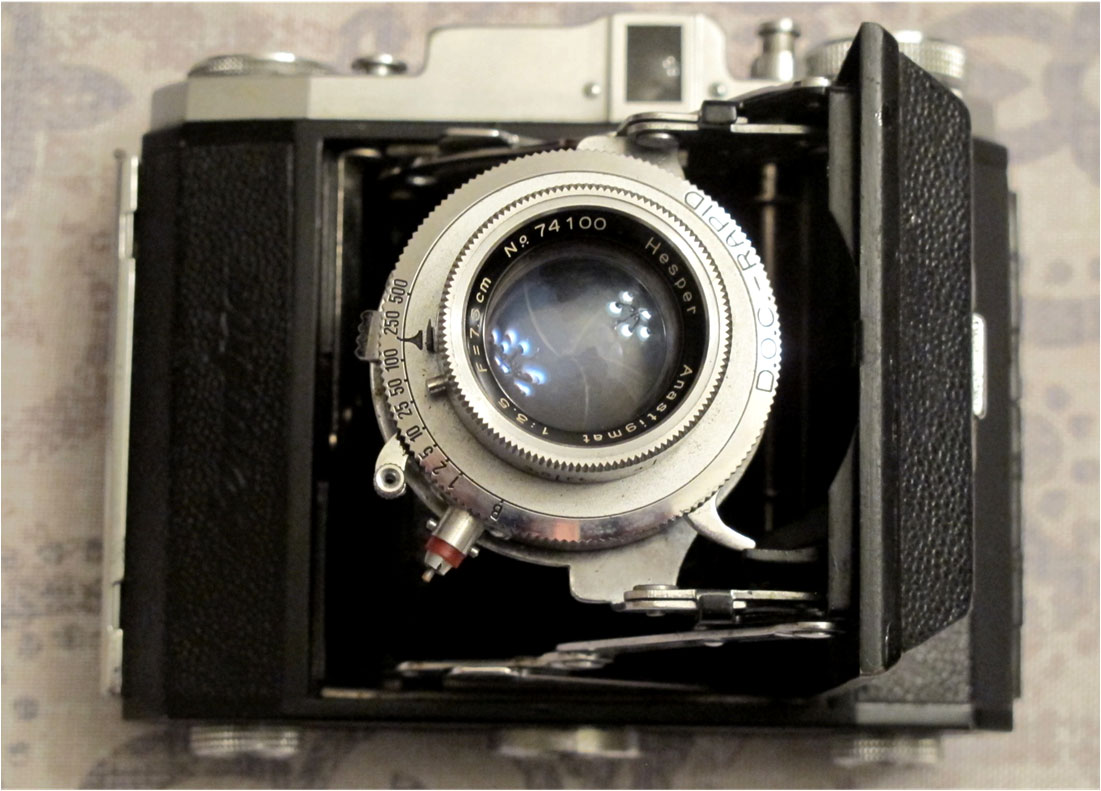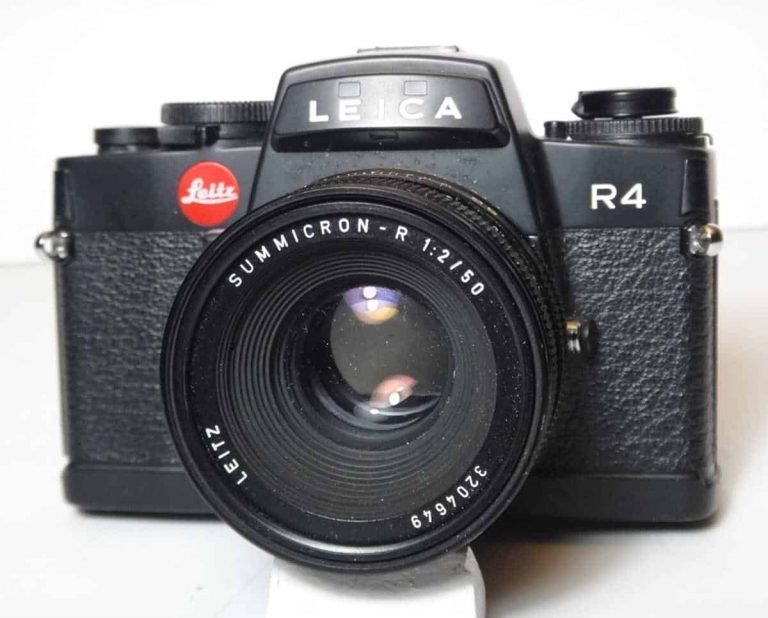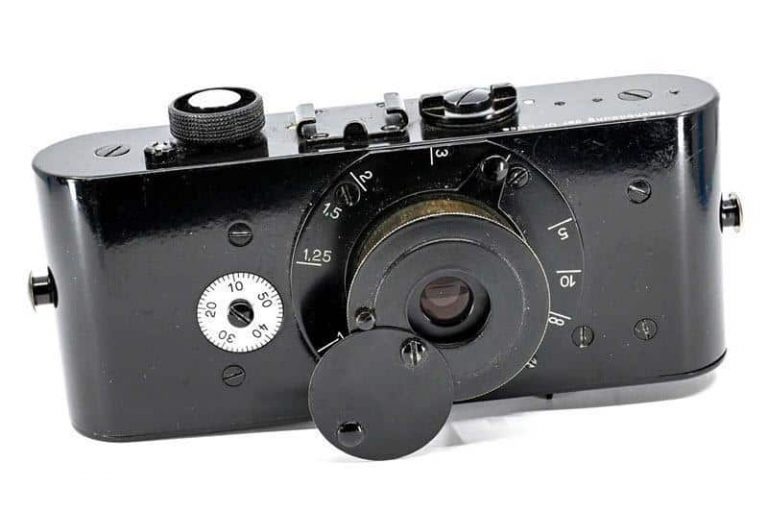
PHSNE Past President Joel Moses is the proud owner of the 1954 Zenobia C pictured here, one of many Zenobia models. After buying and selling two previous Cs, “the features were appealing, so I found a third one on EBay and purchased it.”
Manufactured by Daiichi Kogaku of Japan, the Zenobia C is a 6 x 4.5 folding camera. It is the model most similar to the Waltax Senior which it replaced when Waltax models were renamed in 1952. “The body, inherited from the Waltax, is a copy of the Ikonta 4.5×6” (Zenobia – Camera-wiki.org – The free camera encyclopedia). It has an uncommon rapid shutter copied from the German Compur. The lens is a 7.5 cm f3.5 Hesper Anastigmat coated lens mounted in a D.O.C. rapid shutter.

“The viewfinder is built in a top housing, with an accessory shoe, the advance knob on the left and a rotating depth-of-field scale on the right. The folding bed opening button is on the right and the shutter release on the left. The top housing is exactly the same as that of the Waltax Senior, except that the double exposure prevention mechanism has disappeared. Even the shape of the knobs and buttons is the same. The advance knob is engraved with a black arrow to indicate the advance direction.”
Additional information about the Zenobia C is available at https://mikeeckman.com/?s=zenobia+C. Of the many other models, the Zenobia P is a similar camera, but its shutter was copied from the German Prontor (possibly an explanation to the designation model P, with the model C so named for the shutter based on Compur).
“The Zenobia R is like the Zenobia C with an uncoupled rangefinder, combined with the viewfinder. The ‘R’ certainly stands for Rangefinder. The top housing is extended to the right to cover the additional rangefinder window. In place of the rotating depth-of-field scale, there is a lever positioned under the right thumb to set the rangefinder distance.” The Zenobia SR (for Super Rangefinder) has a coupled rangefinder with front-cell focusing.

Other models are the Zenobia H (probably for Helical) and M, both of which had very short lifespans. None of the model M cameras were sold, and it’s possibly also true for the H which went from front-cell to unit focusing.
Do you have a camera, image, or any item of photographic ephemera that’s unusual or has an interesting provenance? PHSNE welcomes contributions from members and friends. We’ll try to feature your stories and treasures in snap shots.
What the heck…

Are Those Even Cameras?!
Join the PHSNE Newsletter and learn more about photographic history and preservation. Already an expert? Come and share your collections and knowledge as we celebrate the history and advancement of photography.







